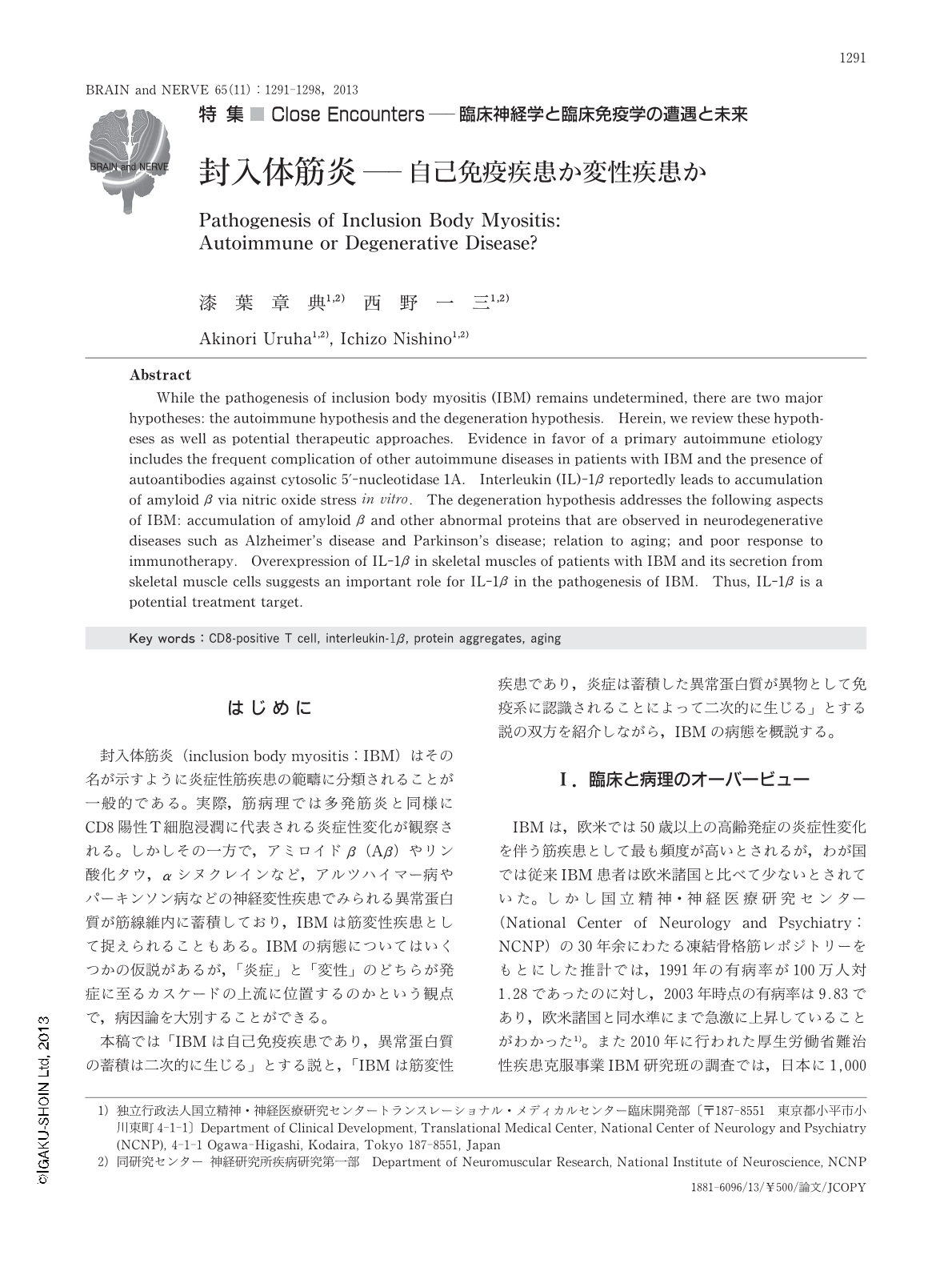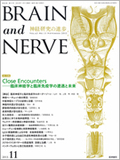Japanese
English
- 有料閲覧
- Abstract 文献概要
- 1ページ目 Look Inside
- 参考文献 Reference
はじめに
封入体筋炎(inclusion body myositis:IBM)はその名が示すように炎症性筋疾患の範疇に分類されることが一般的である。実際,筋病理では多発筋炎と同様にCD8陽性T細胞浸潤に代表される炎症性変化が観察される。しかしその一方で,アミロイドβ(Aβ)やリン酸化タウ,αシヌクレインなど,アルツハイマー病やパーキンソン病などの神経変性疾患でみられる異常蛋白質が筋線維内に蓄積しており,IBMは筋変性疾患として捉えられることもある。IBMの病態についてはいくつかの仮説があるが,「炎症」と「変性」のどちらが発症に至るカスケードの上流に位置するのかという観点で,病因論を大別することができる。
本稿では「IBMは自己免疫疾患であり,異常蛋白質の蓄積は二次的に生じる」とする説と,「IBMは筋変性疾患であり,炎症は蓄積した異常蛋白質が異物として免疫系に認識されることによって二次的に生じる」とする説の双方を紹介しながら,IBMの病態を概説する。
Abstract
While the pathogenesis of inclusion body myositis (IBM) remains undetermined, there are two major hypotheses: the autoimmune hypothesis and the degeneration hypothesis. Herein, we review these hypotheses as well as potential therapeutic approaches. Evidence in favor of a primary autoimmune etiology includes the frequent complication of other autoimmune diseases in patients with IBM and the presence of autoantibodies against cytosolic 5'-nucleotidase 1A. Interleukin (IL)-1β reportedly leads to accumulation of amyloid β via nitric oxide stress in vitro. The degeneration hypothesis addresses the following aspects of IBM: accumulation of amyloid β and other abnormal proteins that are observed in neurodegenerative diseases such as Alzheimer's disease and Parkinson's disease; relation to aging; and poor response to immunotherapy. Overexpression of IL-1β in skeletal muscles of patients with IBM and its secretion from skeletal muscle cells suggests an important role for IL-1β in the pathogenesis of IBM. Thus, IL-1β is a potential treatment target.

Copyright © 2013, Igaku-Shoin Ltd. All rights reserved.


